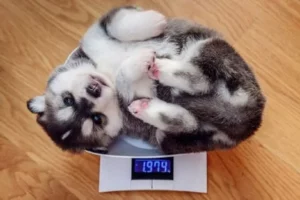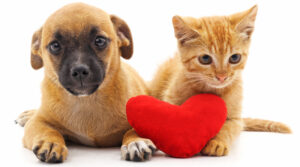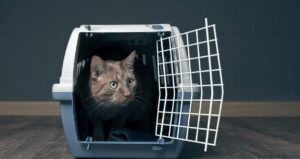Catalyzing enzyme reactions is one of the functions of vitamins. It is important to have a small amount of vitamins and nutrtional supplements for cats to function normally metabolically. It is essential that cats consume several kinds of nutrients, including amino acids from protein, fatty acids, carbohydrates, vitamins, minerals, and water. In order to get enough vitamins in the diet, cat must eat a diet rich in a healthy way since the body can’t produce them on its own.
Proteins and Amino Acids
The 10 specific amino acids found in dietary protein are referred to as essential amino acids because they serve as the building blocks for many important biologically active compounds, including proteins, tissues, organs, enzymes, hormones, and antibodies. These compounds are necessary for growth, maintenance, reproduction, and repair. Pets can produce non-essential amino acids on their own, so there is no need to provide them in the diet.
A diet containing essential amino acids must be provided to the animal since it cannot synthesize sufficient amounts. There are serious health risks associated with deficiencies of specific essential amino acids such as
- Arginin, it is an essential component of the body’s urine, which removes ammonia from the body. It is possible for cats to suffer from toxic levels of ammonia in their bloodstream if they do not consume enough arginine in their diet and resulting in neurologic symptoms that may quickly lead to seizures and death.
- It is essential that companion cats consume taurine, an essential amino acid. Clinical and metabolic issues in cats with taurine insufficiency include central retinal degeneration, blindness, deafness, cardiomyopathy, respiratory failure, and birth abnormalities.
Food sources of protein for cats
Animal and plant proteins are the two primary sources of protein utilised in cat food. Cats can’t obtain all the nourishment they need from plants alone, despite the attractiveness of vegetarian diets and alternate protein sources for pet parents.
- Complete amino acid profiles may be found in proteins that come from animal sources, such as chicken, lamb, turkey, cattle, fish, and eggs.
- Only animal-based proteins like fish and meat contain taurine, an important amino acid for cats.
- Do not give your pet raw eggs. As a raw food, egg whites are high in avidin, an antivitamin that interferes with fats, glucose, amino acids, and energy metabolism.
- In addition to vegetables, cereals, and soy, there is also protein found in these foods. However, these foods are considered incomplete proteins. Vegetarian diets are not suitable for cats
Fats And Fatty Acids
Fats contain more energy per gram than protein and carbohydrates combined, making them the most concentrated form of energy. The structure and operation of cells are significantly influenced by fatty acids. In addition to being required for the creation of several hormones, fats are important for the structure of cells. They are necessary for the absorption and use of fat-soluble vitamins. Insulation and protection for internal organs are provided by fats in the body.
There are no known adverse effects on the cat from eating relatively high amounts of fat. In addition, the development rate may be slowed down or skin issues may worsen if essential fatty acid levels are low.
An omega-6 fatty acid called arachidonic acid. Additionally, it is necessary for the health of the cat’s kidneys, reproduction, and repair of the skin and hair. Inflammation can be treated with the use of omega-3 and omega-6 fatty acids. An inflammatory response can be lessened by substituting certain omega-6 fatty acids with omega-3 fatty acids, whether it is in the skin (caused by allergies), the joints (from arthritis), the intestines (from inflammatory bowel disease), or even in the kidneys (from progressive renal failure).
Cats And Carbohydrates
Carbohydrates are not regarded as necessary nutrients in the cat diet. However, cats need carbs for a variety of vital purposes because they need to maintain their ordinary everyday activities, they require a certain level of energy.
Dietary fibre is a different kind of carbohydrate that a cat’s enzymes cannot break down. Chronic diarrhoea can be controlled with fibres, which are certain types of carbohydrates that alter the composition of the bacterial population in the small intestine.
Low fermentability fibre sources, including cellulose, have quite a negative impact on the growth and surface area of the intestinal mucosa. High levels of gas production and other consequences from highly fermentable fibres might cause excess mucus and flatulence. The healthiest fibres are those that are moderately fermentable, such as beet pulp, which is frequently included in cat meals. These fibres support a healthy gut without having any negative side effects.
Water Comsumption
Cat needs water to be healthily alive. It aids in its maintenance of good health and replenishes the fluids lost through urine and faeces. Additionally, your cat needs water for circulation, digesting, and waste disposal. Even though canned food has up to 78% more moisture than dry food (which has up to 10% more moisture), cats still require access to fresh, clean water at all times.
“A lack of water may have severe effects on dogs; even a 10% reduction in body water might result in significant sickness.”
Energy Needs
Cats require a certain amount of energy to maintain their daily routines. These regular energy needs are all increased by activity, growth, pregnancy, and breastfeeding.
Supplementing your pet’s diet with vitamins is unnecessary when they are fed a complete and balanced diet, unless they are diagnosed with a specific vitamin deficiency.
- Due to the practice of over supplementation, Hypervitaminosis, or vitamin poisoning from oversupplementation is more prominent now than hypovitaminosis, or vitamin insufficiency.
- Vitamin A overdose may cause brittle bones, dry skin, and discomfort in the joints and bones.
- Extra vitamin D may cause calcification of joints, soft tissue, and particularly thick bones.
The extra supplements your cat needs may be beneficial if she is pregnant, nursing, or recovering from an illness. Veterinary advice is recommended in these cases regarding the use of vitamins and the length of time for which they should be given.
Cat Diets: What to Feed Your Pet
Read the label every time!
We are all more aware of ingredient labels these days because we understand how crucial nutrition is to living a healthy lifestyle. Because of this, you need to carefully examine the label on the food your cat is eating. It offers assured analysis of important nutrients, such as the minimal amounts of fat and protein as well as the maximum amounts of fibre and hydration. Whether the food is made for growing, adult, geriatric cats or for all life phases should be specified on the label.
Feeding Practices: How to Feed a Cat, Where to Start, When to Stop
Cat require a unique diet, food should be wholesome, satisfying, and nutritional. Cats need at least two meals each day, spaced around 12 hours apart. A timetable that includes breakfast, lunch, afternoon tea, supper, and immediately before bed is also a fantastic choice. If you go more than 12 hours without eating, your stomach may become too acidic, which will make you feel sick.
Never give your pet fish or poultry bones. These have the potential to splinter, penetrate the stomach or intestinal walls, or lodge in your cat’s neck. Milk shouldn’t be given to cats since it can make them sick. Never give your cat food containing onions or chocolate since they might be poisonous to cats.
Food and drink dishes for your cat should be placed away from busy areas and loud noises. Additionally, it shouldn’t be placed just next to your cat’s litter box, but rather in a location that is cosy and simple for your cat to access. Cleanup is made simpler by placing newspaper or a plastic mat beneath the bowls. Above importantly, keep the bowls and the area around them clean.
Meta Description:
“Cats Feline Diet & Nutrition needs food that contains all the necessary nutrition to stay healthy and fit, but is tasty too. Learn all about the feline diet and nutrition, including which foods are best to feed your beloved cat. “

![02- Cats Feline Diet & Nutrition[1140 × 500px] [Recovered] 02- Cats Feline Diet & Nutrition[1140 × 500px] [Recovered]](https://ivhq8.com/wp-content/uploads/elementor/thumbs/02-Cats-Feline-Diet-Nutrition1140-×-500px-1-copy-py1fu0ibhp5rea6guy6m5vi028zw5lj8fe3nrtis94.jpg)


